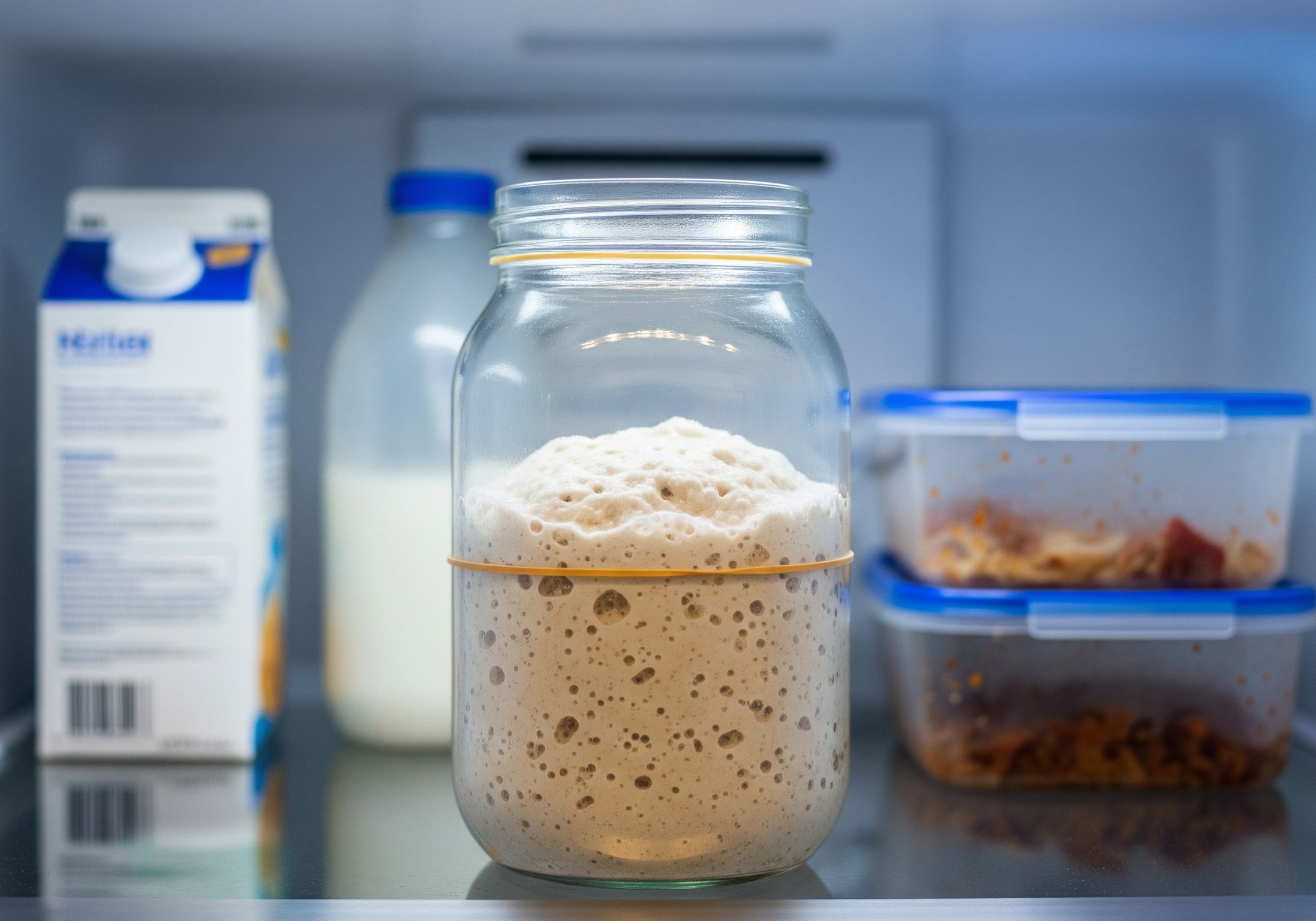Maintaining a Starter (When You're Busy)
Keep your culture alive without letting it take over your life.
The idea of keeping a sourdough starter can seem daunting. Daily feedings, constant discards - it sounds like a pet that never sleeps. But the reality is that a mature starter is incredibly resilient. With a few simple strategies, you can maintain a healthy, powerful starter that's ready when you are, even if you only bake once a week or less.

Your Refrigerator is Your Best Friend
Unless you plan on baking every single day, there is no need to keep your starter on the counter. Cold temperatures dramatically slow down the metabolic activity of the yeast and bacteria in your starter. By storing it in the fridge, you can switch from daily feedings to a much more manageable weekly schedule.
The Weekly Fridge Routine
- Feed and Wait: Feed your starter as you normally would. Let it sit on the counter for 1-2 hours to get the fermentation activity started.
- Chill: Place the starter in the refrigerator. It will continue to ferment very slowly.
- Forget About It: Leave it untouched for up to a week (or even two, if it's well-established).
- The Weekly Feed: Once a week, take the starter out. Discard most of it, leaving a tablespoon or so behind. Feed the remainder with fresh flour and water, let it sit on the counter for 1-2 hours, and then put it back in the fridge. That's it.
Waking It Up for a Bake
When you're ready to bake, you'll need to "wake up" your starter to get it back to peak activity. This usually takes 2-3 feedings.
- Day Before Bake (Morning): Take the starter from the fridge. Discard most of it and give it its first feeding at room temperature.
- Day Before Bake (Evening): It should be showing signs of activity. Give it a second feeding.
- Bake Day (Morning): Your starter should be bubbly and active, having doubled or tripled in volume. It is now at "peak" and ready to be used in your dough.
What About Hooch?
If you see a dark liquid on top of your refrigerated starter, don't panic! This is "hooch," and it's just alcohol produced by the yeast. It's a sign your starter is hungry. You can either stir it back in for a tangier flavor or pour it off before you feed.
Log Your Feedings
Can't remember when you last fed your starter? Use the free Starter Log in the CrumbScience dashboard to keep track of feedings and uses.
Go to the Starter Log